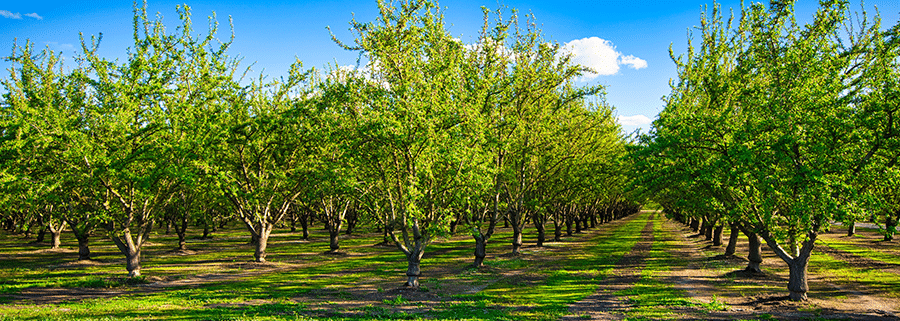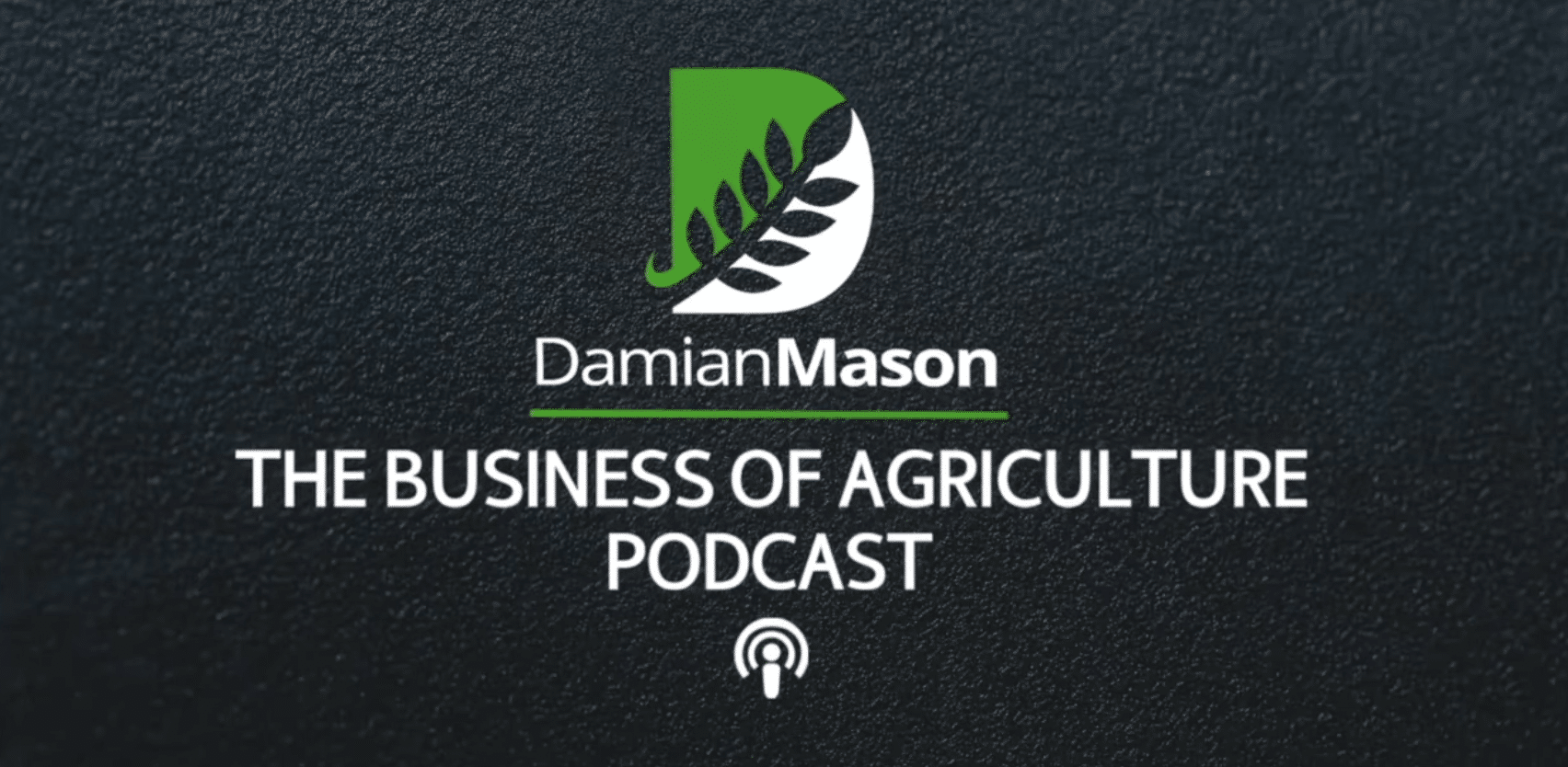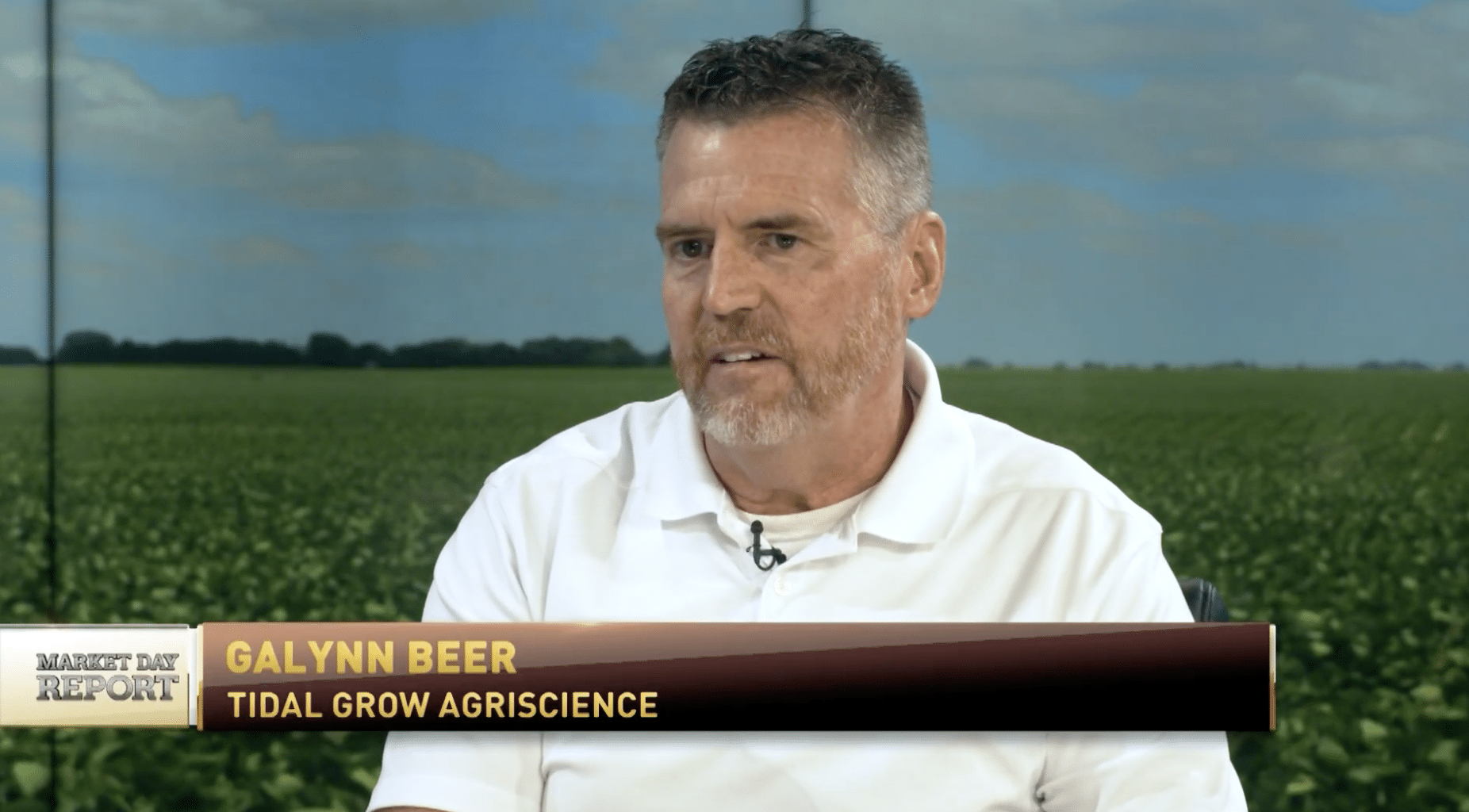Better timing, smarter applications, and thriving trees next season.
Fall is a decision point. For growers managing perennial fruit and nut trees, the post-harvest window offers a narrow but valuable opportunity to restore nutrient balance, prepare for dormancy, and strengthen next year’s crop potential. It’s the final shot at influencing tree performance before winter, and it often determines how well the orchard responds in spring.
When trees shift out of production mode, nutrient movement continues. Nitrogen is redirected into the permanent structures of the tree, mainly the trunk and roots, where it’s stored during dormancy and accessed early the following season. This stored nitrogen supports leaf-out, shoot elongation, flowering, and fruit development long before soil temperatures allow for meaningful root uptake.
Without enough nitrogen in the system at this point in the cycle, trees are slower to develop in spring. Bud activity can become uneven, and the leaf canopy can begin building in fragments. In high-fruiting blocks, early growth can stall completely without a visible cause. Fall nitrogen application helps prevent these setbacks by replenishing reserves at the precise time trees are preparing to store them.
But applying nitrogen in the fall is not a fixed recipe. It requires some calibration. Orchard age, fruit load, and yield behavior all influence how much nitrogen needs to be replaced and how well the tree can store it. Fall weather patterns and soil temperatures also shape the timing and uptake potential. Paying attention to these variables allows growers to deliver nitrogen efficiently without waste or guesswork.
This article outlines why fall nitrogen matters in orchard crops, how to adapt application based on timing and tree condition, and where Tidal Grow® Oceanic® and Oceanic® Organic fit into post-harvest nutrient plans for long-term return on investment.
Trees Store Nutrients After Harvest with Proper Planning
As harvest wraps up, trees shift their focus to storage. The canopy stays active for a short time, continuing to absorb nutrients and move them into woody tissue for use in the spring. Nitrogen taken up during this post-harvest window is held in reserve and becomes the tree’s first available source of nutrition that supports bloom and initial canopy development at bud break.
This process depends on timing. Once leaf function declines or the canopy drops completely, the ability to absorb and translocate nutrients shuts down. Any missed opportunity during this short window limits the nitrogen available for early shoot growth, leaf expansion, and flowering the following season.
Soil-applied nitrogen follows a similar biological rhythm. As long as soil temperatures stay warm and microbial activity remains strong, roots can absorb nutrients efficiently. Supporting that soil biology with the right inputs helps extend the uptake period and keeps more nitrogen in the system instead of being lost to leaching or volatilization.
Tidal Grow® Oceanic® is designed to work with this cycle, either on its own or in combination with nitrogen sources like UAN or calcium nitrate. Its amino-N formulation and trace minerals support microbial activity, improve nutrient availability, and promote strong root development without triggering excess vegetative growth. Applied during this post-harvest window, Tidal Grow® Oceanic® helps trees store what they need now to power growth when spring begins.
While spring applications can supplement fertility, the tree’s demand begins well before most spring programs take effect. By the time nutrients move through the soil and into the roots, the earliest flush of growth is already underway. If internal reserves are low, trees can lag, putting pressure on corrective applications that arrive too late.
Post-harvest nitrogen fills this gap. When timed correctly, it feeds the tree during a quiet yet critical window, backing the biological processes that drive spring performance. Stronger canopy growth, more consistent flowering, and fewer early deficiency symptoms all tie back to this storage cycle.
Fall is when the tree does its prep work. And proactive nutrient programs give it something to work with.
Tailoring Nitrogen Needs to Tree Condition
Mature Trees
With larger root systems and more permanent wood, mature trees can store nutrients on a larger scale. This makes fall a critical window to recharge what was lost during the growing season. Higher nitrogen rates are often required to restore reserves used for canopy maintenance and fruit development. Combining foliar and soil applications helps move nitrogen into storage zones where it can fuel early spring growth. Underapplying in fall pushes the burden onto spring fertility programs, which slows early shoot development and may affect bloom timing.
Young Trees
Young trees have limited storage potential and are more sensitive to overfeeding in the fall. Their smaller root systems and thinner woody tissue mean they benefit from a lighter touch. The priority is to support winter hardening and reserve building without triggering late-season vegetative growth. Excess nitrogen in young trees can delay fruit maturity, reduce coloration, and increase freeze risk due to prolonged shoot growth. Early fall timing and reduced rates are key to supporting health without overloading the system.
Heavy Fruit Load
Trees that produced a large crop often finish the season in a depleted state. Most available nitrogen has already gone into fruit development, leaving little behind for storage. Post-harvest applications are essential here. Fall fertility, applied before full senescence, helps restore internal balance and prepare the tree for the next year’s early growth demands. When trees have been cropped heavily, they demand higher nitrogen requirements and can decline in vigor if not properly replenished.
Light or No Fruit Load
Trees with a light yield don’t experience the same nutrient drawdown and typically retain more of their internal reserves. Still, a modest nitrogen application in fall supports consistency across the block, especially where microbial cycling remains active. These applications help sustain soil biology and avoid early spring growth gaps that complicate pruning, labor coordination, or bloom uniformity. Skipping these blocks entirely may create unnecessary variability heading into the next season.
Alternate/Biennial Bearing Trees
Biennial cycles, common in crops like apples, peaches, pears, and cherries, often stem from nutrient depletion following a heavy fruit year. Without a solid recovery strategy, trees fail to set strong flower buds, leading to light production the following season. This cycle is difficult to alter or correct and is often triggered by failure to support trees post-harvest. Applying nitrogen while the canopy is still active can help reestablish reserves and support more even bud formation for the next cycle. Prioritizing these trees can help bring yield patterns back into balance.
Why Apply Nitrogen After Harvest
Fall is the only point in the season when nitrogen can be delivered directly into the trees’ storage structures that drive spring performance. By applying nitrogen after harvest and before dormancy, growers are working with, not against, the tree’s physiology. This period supports storage rather than new growth.
Rebuilds Internal Nitrogen Reserves
As fruit is removed and growth slows, trees begin reallocating nitrogen into storage tissues. That reserve remains locked until spring, when it fuels early growth like bud activity, shoot elongation, leaf expansion, and flowering, long before root uptake becomes reliable. If reserves are low, trees enter the season underpowered, forced to rely on spring-applied nitrogen that may arrive too late to drive strong initial growth.
Supports Leaf Drop and Winter Preparation
Fall nitrogen applications help guide the tree into dormancy without cutting off nutrient function too early. Nitrogen should be sprayed while the canopy is still photosynthetically active, between October and November, but before natural leaf fall when leaves start to turn yellow to ensure absorption and remobilization to the roots, trunk, and buds. Once leaves fall, uptake capacity drops sharply, so timing is important.
Improves Spring Growth
Stored nitrogen provides the jumpstart trees need for uniform bud break, shoot growth, and bloom. This reserve sets the tone for early vigor, giving growers more consistent canopy development and reducing the need to play catch-up with spring fertility.
Reduces Nitrogen Deficiency
Cold spring soils often limit root uptake. Without strong internal reserves, trees show signs of deficiency early with stunted shoots, pale leaves, and delayed bloom. Fall applications give trees a head start, minimizing these symptoms and stabilizing performance across blocks.
Reduces Nitrogen Leaching
Spring nitrogen is more likely to leach, especially in cool or wet conditions. Fall fertility, when applied while microbial cycling is still active, gives nitrogen a more stable path into either storage or the root zone. This supports better use efficiency and lowers loss risk.
How Tidal Grow® Oceanic® Supports Post-Harvest Performance
Not all nitrogen sources support fall timing. The tree’s storage process is precise. Uptake capacity begins to slow as leaf function declines and temperatures drop. That window demands inputs that are not just present in the system, but also biologically available and aligned with what the tree and soil biology are still capable of processing. Tidal Grow® Oceanic® and Oceanic® Organic were designed for this role.
These cold-processed seafood hydrolysate liquid fertilizers deliver nitrogen derived from amino acids. This formulation supports microbial activity while helping trees absorb and store nitrogen efficiently, and the nutrient profile activates root-zone biology without overstimulating late-season vegetative growth. It’s a balanced approach that delivers steady performance in a narrow application window.
Tidal Grow® Oceanic® also contains trace minerals, fish oils, and amino sugars that support both fungal and bacterial populations. These compounds contribute to improved nutrient cycling, stronger aggregation, disease suppression, and stable soil structure as biological activity slows. This dual benefit of tree uptake and microbial support makes Tidal Grow® Oceanic® a fit for systems looking to optimize both short-term recovery and long-term soil health and performance.
Tidal Grow® Oceanic® is also highly versatile in the field. It can be applied on its own in orchards where synthetic nitrogen is limited or avoided, or tank-mixed with post-harvest fertilizers like UAN, calcium nitrate, or other common nitrogen sources without concern for negative interactions. This compatibility allows growers to tailor their fertility program without compromising performance or flexibility.
Application Recommendations Based on Tree Condition
Post-harvest nitrogen applications work best when matched to the tree condition. General rates are helpful for planning, but customized adjustments based on yield load, maturity, and bearing behavior allow growers to maximize nitrogen efficiency and return. The following table provides suggested rates for Tidal Grow® Oceanic® based on tree type and crop history.

Conclusion: Augment Spring Tree Potential with Smarter Fall Applications
Post-harvest is often an underutilized yet influential window in orchard nutrient planning. Applying nitrogen with Tidal Grow® Oceanic® after harvest and before full dormancy gives perennial trees the support they need to store nutrients efficiently, recover from seasonal demands, and prepare for early spring growth when internal reserves matter most. Matching application rates to tree maturity, crop load, and bearing behavior helps deliver nitrogen where it brings the most value into the structures that power next season’s performance.
Tidal Grow® Oceanic® and Oceanic® Organic are designed to support this process. Their biologically active formulation helps maintain microbial cycling in fall soils and delivers nitrogen in a form trees can use before winter sets in. With the right timing and rate, fall applications improve nitrogen efficiency and create a stronger platform for the season ahead.
Set Your Soil Up for Success with Tidal Grow® AgriScience
To learn how to integrate Tidal Grow® Oceanic® products into your fall fertility program, reach out to one of our Tidal Grow representatives. A few adjustments now can lead to more consistent growth, healthier trees, and higher returns next season and for seasons to come.
You Might Also be Interested in reading about Chitosan in Agriculture.
Citations
Herrera, E. A. (2001, June). Fertilization programs for apple orchards (Guide H-319). New Mexico State University, College of Agriculture, Consumer and Environmental Sciences. http://pubs.nmsu.edu/_h/H319/
Layne, D. R. (2006, March). Why is nitrogen important for peach production? The American Fruit Grower, 70. Clemson University, Cooperative Extension Peach Team. https://www.clemson.edu/extension/peach/commercial/fertilization/importance-of-nitrogen.html
Sallato, B. (2024, October). Fall nutrient sprays in tree fruit. WSU Tree Fruit. https://treefruit.wsu.edu/fall-nutrient-sprays-in-tree-fruit/
Tagliavini, M., Asensio, D., & Andreotti, C. (2025). Increasing nitrogen cycling in deciduous fruit orchards and vineyards to enhance N use efficiency and reduce N losses. European Journal of Agronomy, 154, Article 126829. https://www.sciencedirect.com/science/article/pii/S1161030125000577?ref=pdf_download&fr=RR-2&rr=96a8d523197a1233
University of Connecticut, College of Agriculture, Health and Natural Resources. (2016). Fruit trees that fail to bear. Home and Garden Education Center. https://homegarden.cahnr.uconn.edu/factsheets/fruit-trees-that-fail-to-bear/









